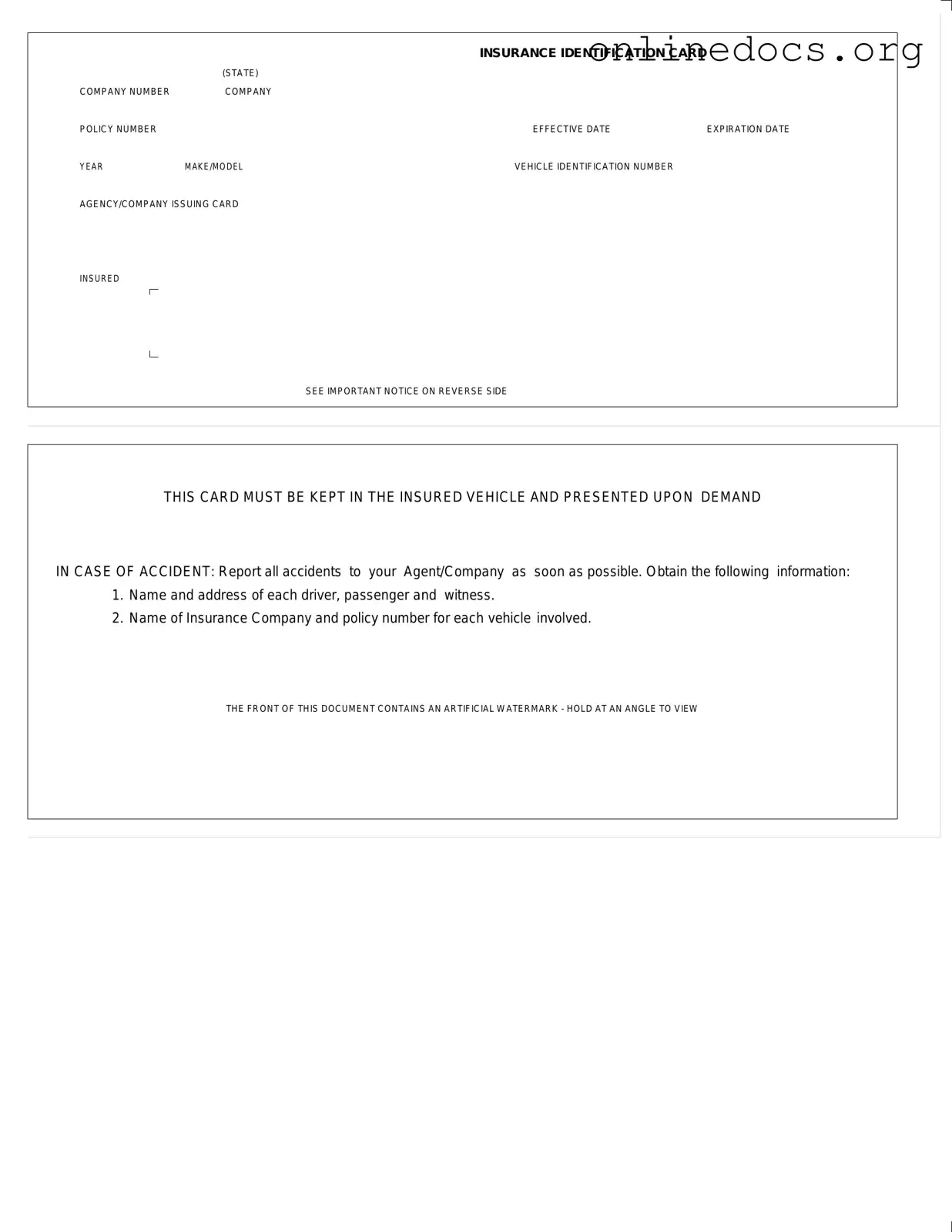The Auto Insurance Card form shares similarities with the Vehicle Registration document. Both documents are essential for vehicle operation and provide proof of ownership or coverage. The Vehicle Registration includes details such as the owner's name, vehicle identification number, and registration dates. Just like the Auto Insurance Card, it must be kept in the vehicle and presented when requested by law enforcement or in case of an accident.
Another document similar to the Auto Insurance Card is the Proof of Insurance Certificate. This certificate serves as verification that a vehicle is insured under a specific policy. It includes information such as the insurance company, policy number, and coverage dates. Like the Auto Insurance Card, it is crucial to keep this document accessible in the vehicle for quick reference during traffic stops or accidents.
The SR-22 form is also comparable to the Auto Insurance Card. This document is required for high-risk drivers to prove they carry the minimum insurance coverage mandated by the state. While the SR-22 is a specific filing with the state, it complements the Auto Insurance Card by ensuring that the driver meets legal insurance requirements. Both documents are vital in demonstrating compliance with state laws.
Additionally, the Insurance Policy Declaration Page has similarities with the Auto Insurance Card. This page summarizes the key details of an insurance policy, including coverage limits, deductibles, and the insured vehicle's information. While the Auto Insurance Card is a quick reference, the Declaration Page provides a more comprehensive overview of the insurance coverage in effect.
When entering into a rental agreement in California, it is essential to understand the terms and obligations involved. A well-drafted agreement not only protects the rights of both parties but also sets the tone for a positive rental experience. For further information on creating a comprehensive contract, you can refer to the legalformspdf.com, which provides useful resources for residential lease agreements in California.
The Bill of Sale for a vehicle is another document that bears resemblance to the Auto Insurance Card. While the Bill of Sale primarily proves ownership, it often includes information about the vehicle, such as the make, model, and VIN. Both documents are essential when transferring ownership or proving that a vehicle is covered by insurance.
Lastly, the Inspection Certificate can be likened to the Auto Insurance Card. This certificate indicates that a vehicle has passed safety and emissions inspections. Like the Auto Insurance Card, it is often required to be kept in the vehicle and presented when necessary. Both documents ensure that the vehicle meets regulatory standards for operation on public roads.
